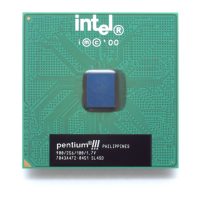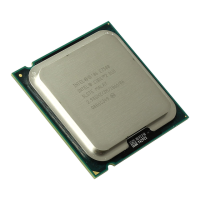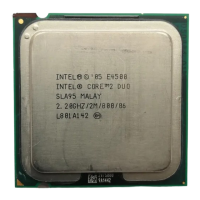Intel® Quiet System Technology (Intel® QST)
70 Thermal and Mechanical Design Guidelines
Figure 7-1. Intel
®
QST Overview
Fan to sensor
Relationship
(Output Weighting Matrix)
Temperature sensing
and response
Calculations
(PID)
Fan Commands
(PID)
Fans
Temperature
Sensors
Intel
®
QST
System Response
PWMPECI / SST
7.1.1 Output Weighting Matrix
Intel QST provides an Output Weighting Matrix that provides a means for a single
thermal sensor to affect the speed of multiple fans. An example of how the matrix
could be used is if a sensor located next to the memory is sensitive to changes in both
the processor heatsink fan and a 2
nd
fan in the system. By placing a factor in this
matrix additional the Intel QST could command the processor thermal solution fan and
this 2
nd
fan to both accelerate a small amount. At the system level these two small
changes can result in a smaller change in acoustics than having a single fan respond
to this sensor.
7.1.2 Proportional-Integral-Derivative (PID)
The use of Proportional-Integral-Derivative (PID) control algorithms allow the
magnitude of fan response to be determined based upon the difference between
current temperature readings and specific temperature targets. A major advantage of
a PID Algorithm is the ability to control the fans to achieve sensor temperatures much
closer to the T
CONTROL
.
Figure 7-2 is an illustration of the PID fan control algorithm. As illustrated in the
figure, when the actual temperature is below the target temperature, the fan will slow
down. The current FSC devices have a fixed temperature vs. PWM output relationship
and miss this opportunity to achieve additional acoustic benefits. As the actual
temperature starts ramping up and approaches the target temperature, the algorithm
will instruct the fan to speed up gradually, but will not abruptly increase the fan speed
to respond to the condition. It can allow an overshoot over the target temperature for
a short period of time while ramping up the fan to bring the actual temperature to the

